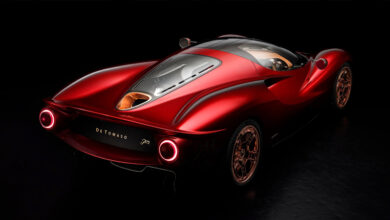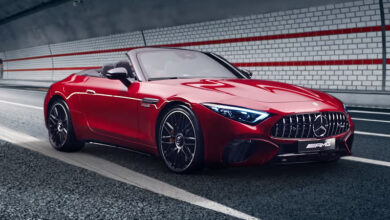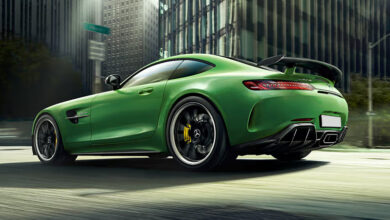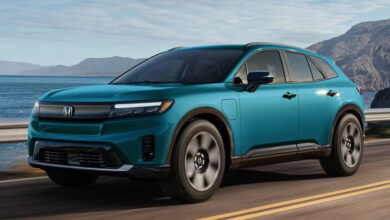6 Fastest Supercars in History, Ranked by Their Maximum Speed
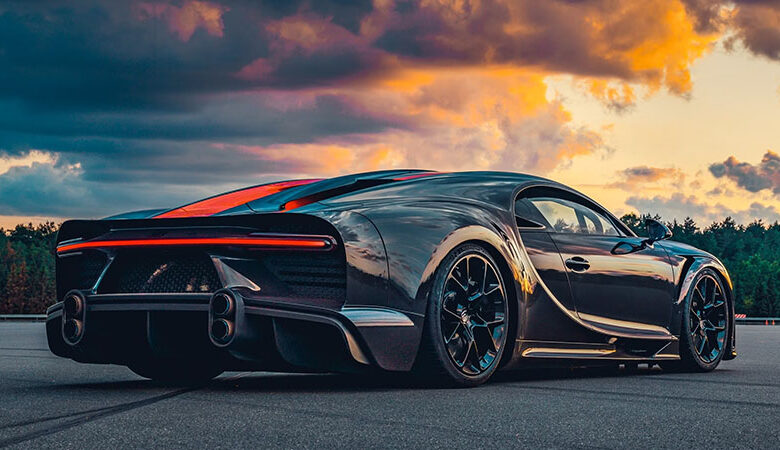
6 Fastest Supercars: It needs significant horsepower, a deliberate approach to aerodynamics, specialist tires, and parts throughout the car that can endure a lot of damage to reach top speeds of more than 200 miles per hour. It’s even more difficult to balance all those requirements with personal pleasures like comfortable seats, a soundproof cabin, and a stereo. Because of this, it’s extremely uncommon to find a production car that can legally travel on public roads and has a top speed of more than 200 mph, whether stated or not.
To reach high speeds of more than 200 mph (and, in certain situations, more than 300 mph), the types of engineering, materials, and production quality needed are also quite costly. The majority of cars capable of reaching those speeds belong to the supercar class and cost well over a million dollars. Even the 1,064-hp Chevrolet Corvette ZR1 isn’t fast enough to make this list, while there are few exceptions that fall under the million-dollar threshold, such as the (yet-to-be-priced) Chevrolet Corvette ZR1 with its recently revealed top speed of 233 mph. What is it, then?
There is no price cap for the production cars on this list from well-known manufacturers, and there is no need to distinguish between supercars and hypercars. Additionally, the vehicles must be road-legal. Therefore, rocket cars are not eligible, and there aren’t any one-off creations here, but they are essentially only multi-million dollar cars with comparatively few units produced.
Bugatti Veyron Super Sport – Speed 268 Mph
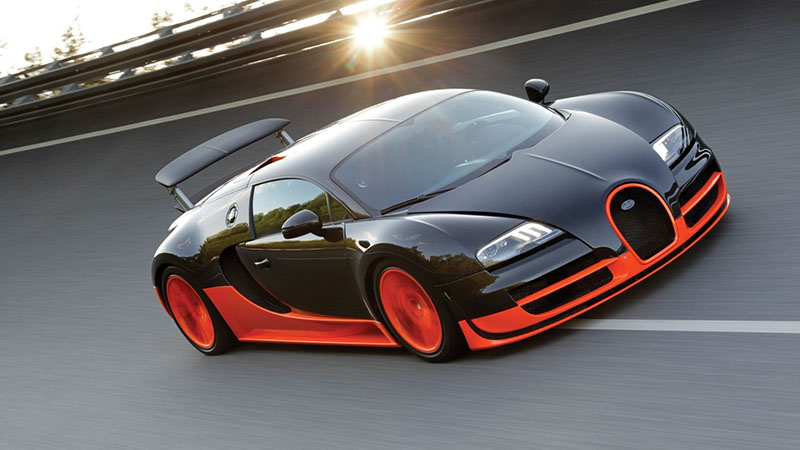
James May’s 2011 effort to max the Bugatti Veyron Super Sport may be the production car top speed run that has been witnessed by more people globally than any other. The BBC Top Gear host at the time was known as Captain Slow because of his notoriously slow driving, but even he managed to hit a recorded speed of 259.11 mph in the Super Sport. But the test drivers and engineers at Veyron believed they could perform better. So they did. The Bugatti test driver broke the production car record by averaging 268 mph in the Super Sport, surpassing May’s restrictions.
The enormous W16 engine of the Veyron Super Sport helped James and the test drivers reach their incredible high speeds. With the help of four turbochargers, the 16-cylinder engine (also known as the 16.4) generated 1,200 horsepower. With a reported curb weight of 4,162 pounds (1,888 kg) by Bugatti, the Veyron Super Sport was fairly heavy by most contemporary supercar standards, which added to the impressiveness of its top speed run. The Bugatti Veyron Super Sport cost $2.5 million back in the day.
Koenigsegg Agera RS – Speed 277.87 Mph
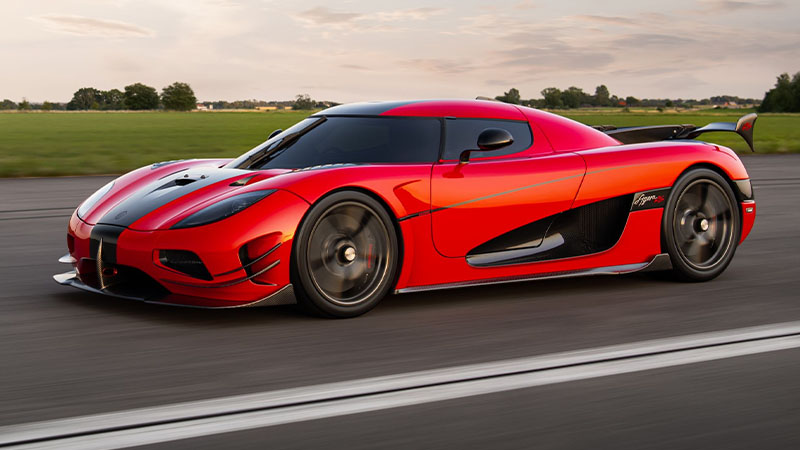
In 2017, Koenigsegg broke several marks in the Nevada desert using a customer-owned vehicle. Once the quickest Koenigsegg on the road, the Agera RS had incredible acceleration and was the vehicle that Koenigsegg utilized to defeat Bugatti. Bugatti’s Veyron Super Sport had a top speed of 268 mph (431 kph) at the time, but the Koenigsegg crushed that record. The Agera RS achieved 284.6 mph during its initial run across Highway 160 in Nevada and 271.2 mph during its return trip across the restricted public road. This meant that the Agera RS was the fastest production automobile in the world at the time, with a top speed average of 277.9 mph.
Depending on the fuel type, the Agera RS’s twin-turbocharged 5.0-liter V8 engine could generate anywhere from 960 to 1,160 horsepower. For the Agera RS, Koenigsegg quoted a curb weight of 3,075 pounds. When the Agera RS first came out, it cost about $2.5 million, but now it’s closer to $5 million.
SSC Tuatara – Speed 295 Mph
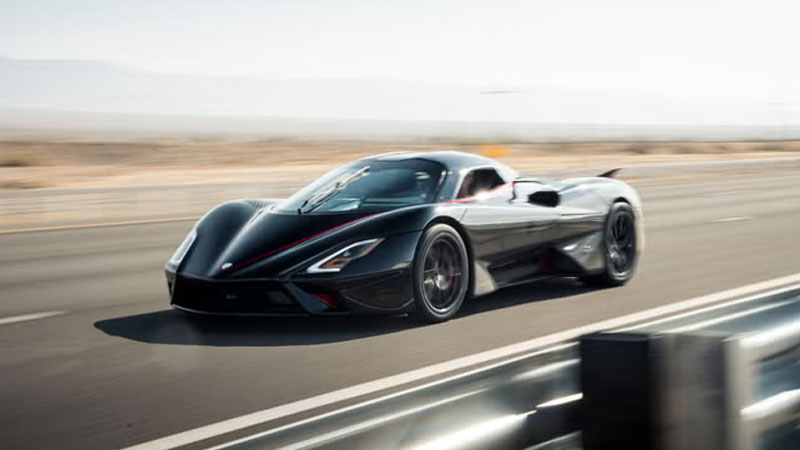
Shelby Supercars, or SSC, was embroiled in a great deal of controversy a few years ago. According to their claims, the Tuatara, their supercar, averaged 316.11 mph over several runs and reached a top speed of almost 330 mph. Then, following a year or so of attempting to replicate the stated top speed and a great deal of internet criticism, Tuatara acknowledged that the initial 300+ high speed run never took place. Although it wasn’t shocking to some who said the previous record was a hoax, it was a huge letdown to learn that SSC hadn’t broken their own record. Nevertheless, SSC persisted with the Tuatara and eventually reached 295 mph. They also brought receipts this time.
The Tuatara’s peak speed run at the Kennedy Space Center in Florida in May 2022 was captured by GPS monitoring and onboard data logging. With twin turbochargers, the Tuatara’s 5.9-liter flat-plane-crank V8 engine generates 1,350 horsepower on 91-octane fuel. Power increases to 1,750 horsepower when the tanks are filled with ethanol or methanol fuel, according to SSC. The lightweight carbon-fiber shell and monocoque let the Tuatara stay very light at 2,750 pounds (dry weight), while the V8 can reach 8,800 rpm. The Tuatara costs between $1.3 million and $1.9 million.
Bugatti Chiron Super Sport 300+ – Speed 304.773 Mph
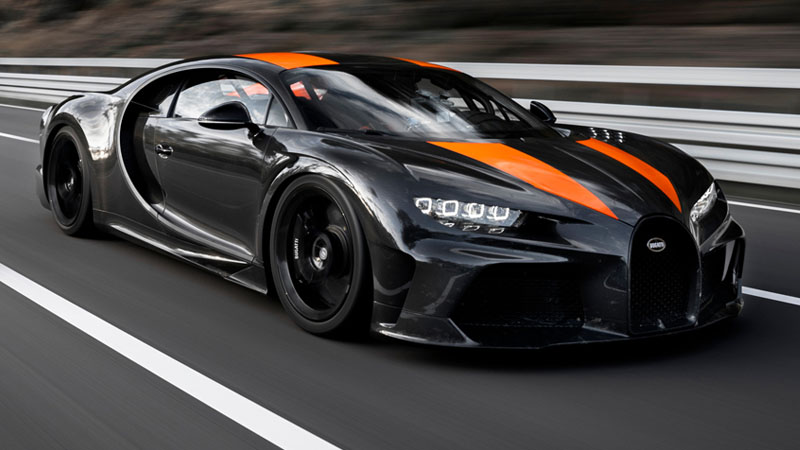
The Bugatti Chiron Super Sport 300+ is still the fastest member of the Bugatti family, even though the new Tourbillon may be making all the news these days. The Chiron Super Sport 300+, in contrast to some of the other high-speed supercars on this list, has undergone field testing and reached a top speed of over 300 mph, exactly 304.773 mph in 2019. What was the journey there? Naturally, the 300+ has a lot of power and unique modifications to make it stand out from other Chirons.
The 300+’s exterior has exposed lightweight carbon fiber, and its wheels are made of magnesium alloy, which is both incredibly light and sturdy enough to endure the severe forces of a 300 mph test run. A modified 8.0-liter quad-turbo W16 engine from the normal Chiron, which generates 1,578 horsepower and 1,180 lb-ft of torque, is also used in the Chiron Super Sport 300+. Compared to the typical Chiron model, that is almost 100 horsepower more.
Also Read: 20 Expensive Sports Cars That Transform Performance and Luxury
The 300+ had modifications that fixed the “thermal management” and upgraded the transmission, ensuring the Bugatti remained cool throughout its incredible top speed run. Additionally, it features what Bugatti calls a “longtail,” which increases the car’s length by 25 centimeters and enhances aerodynamics. Out of the 300+, Bugatti only made 30 of them, and each one went for at least $3.8 million.
Hennessey Venom F5 – Speed 310.7 Mph
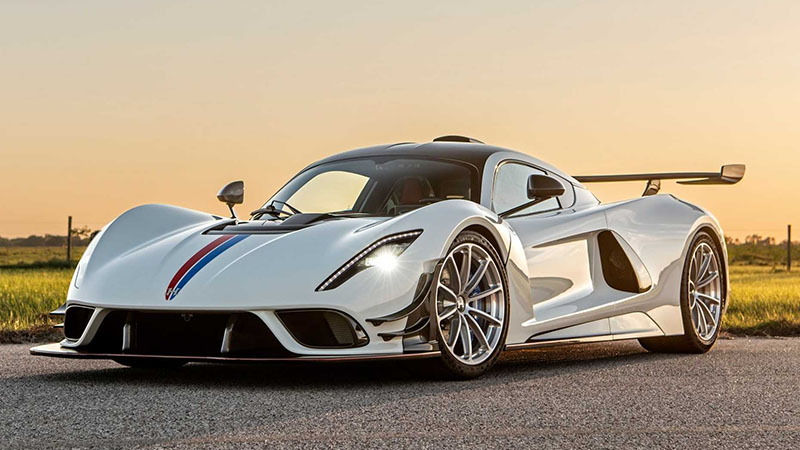
The Hennessey Venom F5’s specification sheet states that it can reach a maximum speed of 500 kilometers per hour, or 310.7 mph; nevertheless, its peak speed runs have not yet surpassed the 300 mph mark. “Fury” is the name given by the Hennessey team to the amazing engine that drives the F5, and it’s a tremendous storm of statistics. The 6.6-liter V8 engine of the Venom F5 has dual turbochargers and a redline of 8,500 rpm. 1,817 horsepower and 1,193 lb-ft of torque are produced by that entire system. The Venom F5 is not only among the most potent production vehicles ever produced, but it is also the most potent vehicle ever made available with a manual gearbox. Only twelve of the six-speed gated manual transmissions are being produced, and they have all already been sold.
Carbon fiber is used extensively in the Venom F5’s construction, as it is in almost all modern supercars. Carbon fiber is the monocoque. as well as the steering wheel and body panels. Aluminum is used in the construction of the engine, wheels, shifter paddles, and pedals. The F5 remains incredibly light in relation to its capabilities because of the use of all these lightweight materials. According to Hennessey, the curb weight is 3,053 lbs (1,385 kg), which is less than the weight of the majority of typical passenger automobiles. A cool $3 million is the starting price for all this high-horsepower lightweight tech.
Koenigsegg Jesko Absolut – Speed 311+ Mph
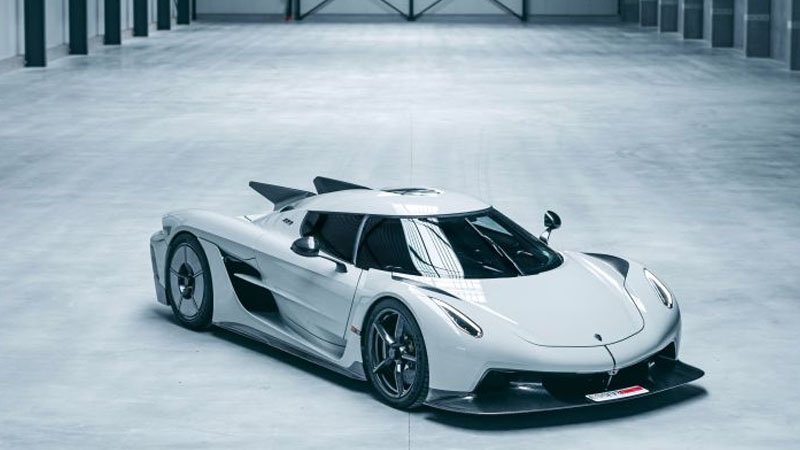
With a top speed of 311 mph, the Koenigsegg Jesko Absolut appears to be serious about shattering numerous records and becoming the fastest production supercar ever—though this is only a boast for now. The Jesko Absolut has established some extremely quick records in real-world testing, such as a time of 28.27 seconds to accelerate from zero to 250 mph and back to zero again (0-250-0). Koenigsegg’s chassis dyno simulations show that the Jesko Absolut can reach speeds of over 311 mph (500 kph), but the business hasn’t tried it yet because it hasn’t discovered a suitable road.
Not only must they accelerate to 311 mph, but they also need to decelerate down from that amazing speed, which takes a lot of space. Though it hasn’t happened yet, interviews with Christian von Koenigsegg, the business’s CEO, reveal that the company is still focused on trying to create a record-setting top-speed run (at least as recently as July of this year).
The Jesko Absolut runs on ethanol gasoline (E85) to maximize power, just like other supercars on this list. On maximal assault, the 5.0-liter twin-turbocharged V8 produces 1,600 horsepower, which is equivalent to 1,280 horsepower on regular gasoline. It can exert 1,106 lb-ft (1,500 Nm) of torque. Additionally, the Jesko Absolut uses a lot of carbon fiber (monocoque, bucket seats, intake manifold) to keep its weight down to a meager 3,064 lbs (1,390 kg), just like the other lightweight supercars on this list. It cost $3.4 million.

